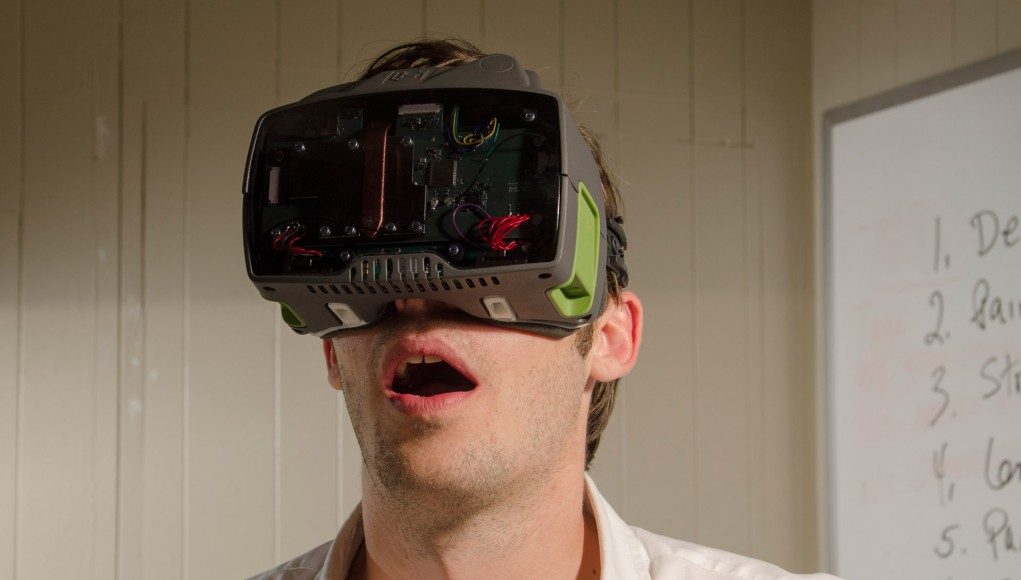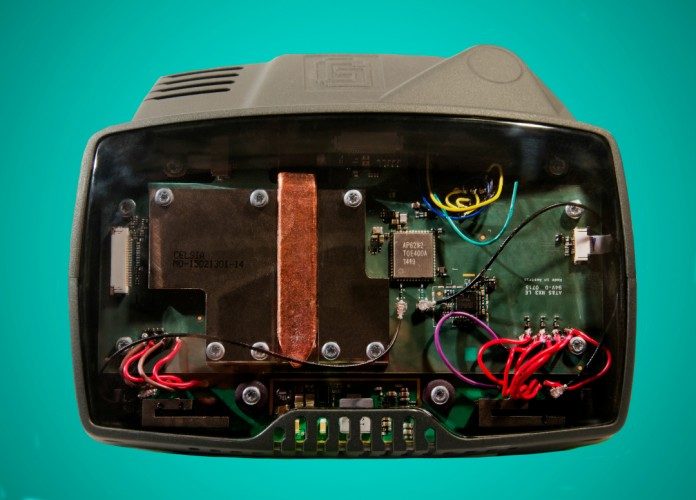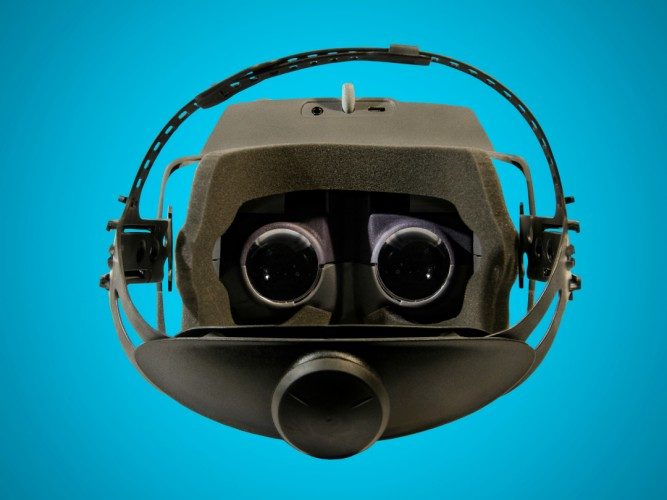GameFace Labs showed off their latest prototype mobile VR headset at E3 last week, a device that promises to deliver both a standalone Android-based mobile VR experience and a tethered PC experience in the same headset.
GameFace calls their prototype headset a head mounted console (HMC), departing from the company’s last model by allowing for both Android-based mobile experiences, and PC-driven tethered gameplay.
Unlike other mobile headsets which dock with a smartphone to power the VR experience, GameFace’s ‘Developer Console’ (GFLDC) features an on-board nVidia Tegra K1, a mobile SoC (System on Chip) with quad-core ARM Cortex-A15 that clocks at 2.3 GHz—the same chip that powers nVidia’s Shield tablet—making the headset a completely self-contained VR headset.
GameFace has now announced that their device will be capable of connecting to a PC using Valve’s OpenVR API suite, handing the reins of its 75Hz 1440p OLED panel over to the PC’s greater horsepower. More importantly though, this also gives the device access to SteamVR games and Valve’s Lighthouse ‘room scale’ tracking and input solution, which the company is currently exploring for positional tracking.
The GFLDC is expected to be available in Q2 of 2016.
The headset principally drives Google Cardboard experiences for the time being on the mobile side of things (though the company is exploring its own content store), while the prospect of having a single device that can play on-the-go or back at home via SteamVR is entirely new territory for VR. In this case, the ‘console’ distinction is actually pretty useful in helping to differentiate itself from both smartphone VR experiences and purely tethered VR platforms simply based on the fact that no such manufactured device has attempted to bridge the divide between the two.
“We’re thrilled to offer developers the opportunity to cater to the both mobile and PC markets and create immersive, cross-platform experiences, all on the same device.” said GameFace Labs CEO Edward Mason. “We believe Virtual Reality should be an untethered experience and our console brings that reality a step closer.” Mason added that the new generation of Android VR gaming devices are being designed to eventually replace the current “under-powered” mobile solutions available and replicate the PC experience.
GameFace Labs showcased their first Android VR device in August 2013. Later in 2014, the company showed off their Mark 5 mobile VR headset, the first from the GameFace to incorporate the 2.5K OLED display. We’ll be reporting our impressions from E3 in a hands-on article soon to follow featuring the new updated prototype mobile VR headset.
Here’s a quick spec sheet of what GameFace has in store for its shipping developer kit:
- Display
- 75Hz OLED Display
- 2560 x 1440 resolution
- 140° field of view
- Internal
- nVidia Tegra SoC
- SSD flash storage
- 4GB mobile DDR4 RAM
- Wi-Fi 802.11ac wireless technology
- Bluetooth 4.0 wireless technology
- DLNA Media Server
- Sensors
- Valve Lighthouse
- Ultra-low latency, 9-axis orientation sensors
- Accelerometer
- Gyroscope
- Magnetometer
- Wide angle stereo cameras
- I/O
- HDMI
- MicroUSB v3.0
- MicroSD storage slot
- 3.5mm audio jack









